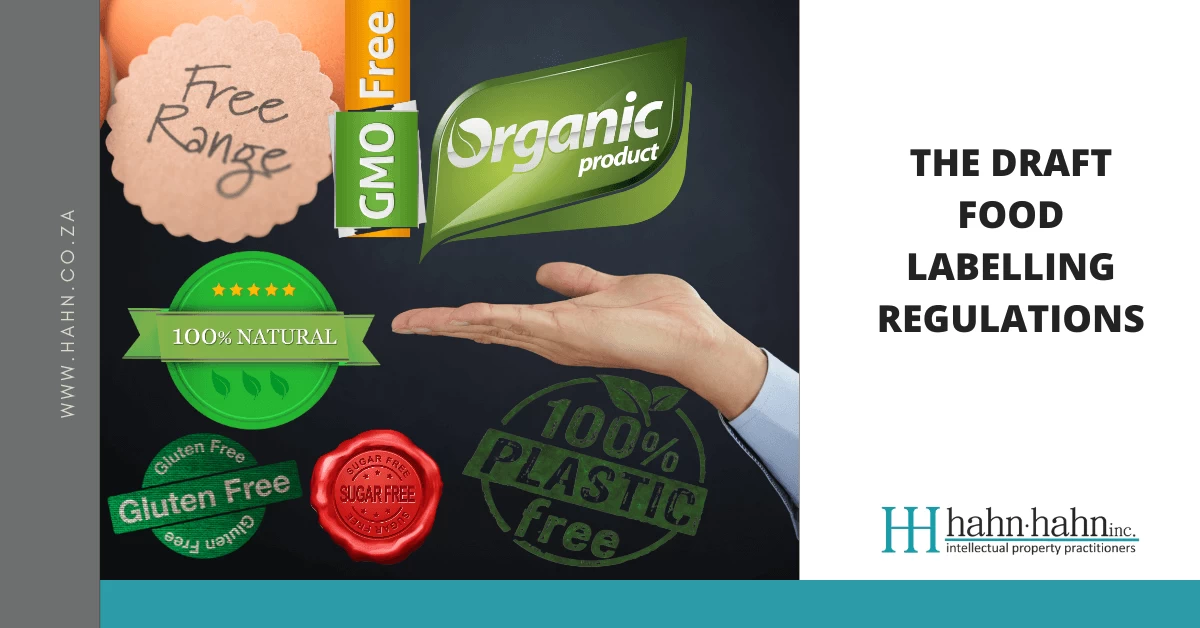
The word is out and the new draft food labelling Regulations, R2986 of the Foodstuffs, Cosmetics and Disinfectants Act. No 54 of 1972 (FCD Act), have been published. Whilst these Regulations have been awaited for quite some time, it has nonetheless caused panic to spread throughout many companies that will be impacted by these Regulations.
The Regulations aim to regulate what information is allowed to appear on a label as well as how this information is to be conveyed to a consumer, brand owners must take note that they are not exempt and that R2986 applies to brand names and registered trade marks as stated repeatedly throughout R2986.
According to the draft food labelling Regulations, under the provision dealing with prohibited statements, Regulations 9(2) and 9(3) specifically deal with trade marks:
(2) A compound foodstuff, whether in solid or liquid form, which claims certain beneficial nutrients or category of nutrients and ingredients with health benefits in the brand or trade name+
(a) may, if the brand or trade name was registered before 1 May 1995, use the brand or trade name for six months after the date of promulgation of these Regulations;
(b) may not, if the brand or trade name was registered after 1 May 1995, use such brand or trade name after the promulgation of these Regulations.
(3) A compound foodstuff, whether in solid or liquid form, which contains a health claim in the brand or trade name+
(a) may, if the brand or trade name was registered before 1 May 1995, use the brand or trade name for six months after the date of promulgation of these Regulations;
(b) may not, if the brand or trade name was registered after 1 May 1995, use such brand or trade name after the promulgation of these Regulations.
Our emphasis+
Thus, products that bear a trade mark for a foodstuff and which fall under the above provision, will ultimately not be able to use their trade mark on foodstuffs that don’t comply with the requirements in the regulations anymore. Source: https://familywellnesshq.com/being-fooled-at-the-supermarket-20-claims-on-food-labels-exposed/
March 2023 Page 24 VOL 2 ISSUE 10
Brand owners will need to check their trade mark(s) and ask the following:
- Does the trade mark claim beneficial nutrients?
- Does the trade mark claim a category of nutrients and ingredients with health benefits?
- Does the trade mark contain a health claim?
- When was the trade mark registered?
The answers to the above questions will determine whether the trade mark may still be used for a further 6 months after promulgation of the Regulations or whether the trade mark will need to be immediately removed from the labels.
Although these draft regulations will surely be seen as drastic and are likely to cause a stir, it must also be mentioned that the stance taken by the Department of Health (DoH) in this regard comes as no surprise. The use of possibly misleading trade marks on product labels has long been a concern with the Department of Health (DoH), as well as the Department of Agriculture, Land Reform and Rural Development (DALLRD) for that matter.
As can be seen from Section 5 of the FCD Act:
1. Subject to the provisions of subsection (2) and section 6, any person shall be guilty of an offence if he-
a. Publishes a false or misleading advertisement of any foodstuff, cosmetic or disinfectant; or
b. For purposes of sale, describes any foodstuff, cosmetic or disinfectant in a manner which is false or misleading+ as regards its origin, nature, substance, composition, quality, strength, nutritive value or other properties or the time, mode or place of its manufacture; or
c. Sells, or imports for sale, any food stuff, cosmetic or disinfectant described in the manner aforesaid.
2. The provisions of subsection (1) shall not be deemed to prohibit the description of any foodstuff by, or its sale or importation under, a geographical name which is generally accepted as a generic term for a particular variety of such foodstuff, provided the foodstuff described by or sold or imported under the name in question is of the type or variety indicated by that name.
+Our emphasis
The purpose of the FCD Act (and these draft Regulations) is to protect the public from false and/or misleading impressions. This is further confirmed by Section 15 of the FCD Act which confers on the Minister the power to make regulations which prescribe the manner in which any foodstuff, cosmetic or disinfectant shall be labelled, the name under which any particular foodstuff, cosmetic or disinfectant may be sold or prohibit the sale of any foodstuff, cosmetic or disinfectant under a name other than a name so prescribed.
For trade marks registered before 1973, there is a glimmer of hope in Section 15(2) of the FCD Act, which states the following:
No regulation shall be made under the subsection (1)(h) which will have the effect of prohibiting the sale of any foodstuff, cosmetic or disinfectant under a trade mark or trade name under which it is sold at the date of the coming into operation of this Act, save in such cases where the Minister is satisfied that the trade mark or trade name falsely or misleading describes the foodstuff, cosmetic or disinfectant.
Trade marks registered before 1973 cannot be categorically prohibited and the Minister will need to apply his mind and deal with each trade mark on a case by case basis. Whether or not these powers can indeed extend to registered trade marks may be subject to legal challenge and will ultimately be for the Courts to decide. However, as the government has an obligation to protect the public, this will be a difficult argument to present before a Judge. The health of the public will always be an overriding factor and this was made abundantly clear in the matter of BATSA v Minister of Health1.
It must also be noted that this firm stance is not just specific to South Africa and in fact many countries are clamping down on the use of trade marks which contain health claims. In the EU the Health Claims Regulation has now been amended to prohibit the use of trade marks which contain health claims from 20 January 2022. In the US trade marks such as “Healthy Choice”, “Kelloggs Pure Organic” and “Eat real brand” are becoming an issue. Recently, Toblerone made the decision to remove their trade mark Matterhorn logo from all their packaging, which has become synonymous with the product name Toblerone, as they can no longer claim to be Swiss made.
The purpose of the draft regulations is also to ensure that it will no longer be possible for anyone to fall back on their trade mark as way to “get around” prohibited claims. Once these Regulations are promulgated and a brand owners trade mark falls under the provision of Regulation 9, brand owners will need to consider the very real possibility of re-branding.
1 BATSA v Minister of Health (463/2011) [2012] ZASCA 107 See: 107.pdf (saflii.org)
Article originally published on SAIIPL IP Briefs, Vol 2 Issue 10, March 2023
